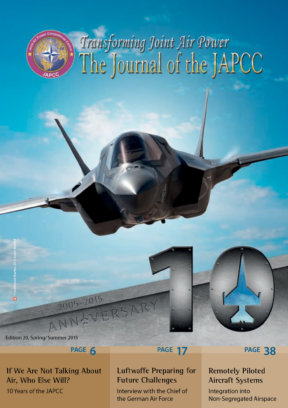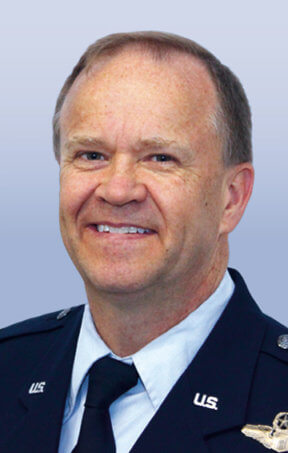Introduction
One of the results of conducting years of combat operations in Afghanistan is improved interoperability across the NATO nations. Despite this, it has been noted in numerous JAPCC studies that there is still a lot of room for improvement, especially in the air operations communities.1
One of the areas where improved interoperability is needed is in the rotary wing community. It has been documented that standardization of rotary wing qualifications across the Alliance has been an ongoing issue. A potential solution for this standardization issue would be to establish a training facility where NATO rotary and fixed wing aircrew and maintainers can receive education and training that addresses this issue. Fortunately, such a solution is evolving with the foundation of the Multinational Aviation Training Centre (MATC).
The Roots of the MATC
The roots of the MATC can be traced to the Multinational Helicopter Initiative (MHI) and the subsequent Air Advisor Team Pre-Deployment Training (AAT-PDT) course programme.
The MHI was established in 2008 on the basis of a bilateral summit between France and the UK and is designed to support the development of a number of multinational transport helicopter projects. Initially focused on raising the number of mission capable helicopters for ISAF, it seeks to help those countries that do not have the resources to deploy and run a transport helicopter operation on their own. In addition, the MHI supported the European Defence Agency (EDA) led Helicopter Exercise Programme (HEP) – including HOT BLADE exercises – and training packages under the common title of Helicopter Training Programme that include several courses such as the Helicopter Tactics Course, Helicopter Tactics Instructor Course and Operational English Language Course. The MHI also supported the HIP Helicopter Task Force (HTF) initiative which facilitated deployment of Czech helicopters to ISAF in 2010 -2011. The HIP HTF initiative includes 10 nations (Albania, Czech Republic, Hungary, Italy, Norway, Poland, Slovakia, Spain, UK and USA). Being created in February 2009, it is currently moving towards termination as most of its objectives were taken over by MATC.
The first AAT-PDT course started in 2012 as an effort to streamline the preparation and training system for aviation personnel (helicopter aircrew and maintenance specialists) for the nations supporting the Aviation Security Force Assistance (AvSFA) advisory teams across Afghanistan. The main objectives of this course were to standardize aircrew procedures, consolidate the conduct of mentor training, and improve the overall level of flight safety for the participating nations. The AAT-PDT consists of two parts – simulator training at the Helicopter Training Point (HTP) Ostrava, Czech Republic and flight training at Zadar Air Base, Croatia. Each course is supervised by experienced contracted helicopter instructors and typically supports approximately forty personnel from Czech Republic, Croatia and Hungery. For each course, 20 aircrew members attend the Simulator Phase and twenty maintenance personnel join them for the flying training in Zadar.
A Smart Defence Initiative
Capitalizing on this success, the Czech Republic conceived the initiative to build the MATC. Building on operational experience gained in Afghanistan and elsewhere, the MATC project seeks to provide and share expert capabilities and experience for the benefit of NATO, EU and partner nations under the ‘Smart Defence’ initiative. It would enable the participants to:
- Improve, harmonize and standardize training and education;
- Improve interoperability and helicopter capabilities;
- Take an active role in development of training standards and concepts;
- Provide conditions to deploy helicopter capabilities and trainers to theatres of operation via a comprehensive and standardized training scheme.
So far, NATO has registered 26 projects as ‘Tier 1’ Smart Defence projects, one of which is the MATC. These Smart Defence projects seek to improve operational effectiveness, employ economies of scale, and improve connectivity between national forces. ‘Smart Defence’ is a new way of thinking about generating the modern defence capabilities that the Alliance will need for the coming decade and beyond, particularly through multinational cooperation that allows countries to develop and sustain capabilities that they otherwise cannot afford. It centres on a renewed culture of cooperation that encourages Allies to cooperate in developing, acquiring and maintaining military capabilities to undertake the Alliance’s essential core tasks agreed in the new NATO strategic concept. That means pooling and sharing capabilities, setting priorities and coordinating efforts better.2
Road to Full Operational Capability
A Letter of Intent (LOI) to work together towards establishing the MATC was signed by Croatia, Czech Republic, Slovakia and USA on 21 February 2013. Hungary also formally joined this initiative on 20 September 2013. The Initial Operational Capability (IOC) of the MATC is planned for 2015 and Full Operational Capability (FOC) should be achieved about two years later.
The MATC Focus Areas
Initially, the MATC will provide comprehensive training for flying and maintenance personnel from allied and partner nations on MI-type helicopters in order to maximize the use of existing capabilities and structures while minimizing overall costs. It will focus on the deployment of helicopter detachments in support of NATO operations as well as preparing Air Advisor Teams, which will provide training to Afghan National Security Forces (ANSF) as long as that requirement continues to exist.3 The focus will include multinational logistics, operational doctrine development, education, mutual recognition of airworthiness rules, and other possible areas. The MATC further seeks to increase interoperability of rotary wing aviation in support of AvSFA requirements, assist in the development of AvSFA doctrine and training, and capitalize on the ‘Smart Defence’ initiative to reduce redundancies, increase efficiency and reduce national financial and personnel expenditures. It will do this by standardizing education and training, improving technical and tactical standards as well as improving the common deployment capability of helicopter crews and of ground maintenance experts.4
MATC Support to Special Operations
The work the MATC currently accomplishes to support AvSFA teams addresses another acknowledged NATO issue. At the NATO Summit in Riga, Latvia in 2006, NATO identified that it had a significant shortfall in its total Special Operations Forces (SOF) capacity and capability. It chartered the NATO SOF Transformation Initiative to address this issue.5 This initiative focused on three areas that include enhancement of SOF staff capacity at Supreme Headquarters Allied Powers Europe (SHAPE), establishment of a NATO SOF coordination centre and development of a NATO federation of NATO SOF training centres.6 This federation of SOF training centres would enable a rapid leap forward in SOF interoperability and training through linking national/multinational facilities. They would:
- Capitalize on an inherent strength of the Alliance to better enhance the cohesion and interoperability;
- Reduce the duplicative infrastructure;
- Capitalize on subject matter expertise;
- Expand the capabilities of nations with nascent SOF;
- Bring together unique SOF training opportunities and facilities NATO-wide.7
Through improving overall NATO AvSFA capabilities, the MATC can significantly contribute to ‘military assistance’, one of the three core tasks of NATO SOF (besides strategic reconnaissance and direct action), and thereby help to ease the identified SOF capability shortfall. The MATC could be one of the SOF training centres mentioned in the SOF initiative and could eventually support other types of helicopters or fixed wing aircraft with an adequate level of NATO support. It is currently considering the possibility of supporting other helicopters or fixed wing aircraft in the future if it is determined the requirement exists.
Outlook
Despite the sweeping changes that are going on in Afghanistan with respect to NATO’s future involvement, a statement in the NATO Chicago Summit declaration from 2012 indicated that a post-2014 mission of a different nature, to train, advise and assist the ANSF, including the Afghan Special Operations Forces, will continue in Afghanistan.8 This SFA competency to train, advise and assist partner nations will improve NATO’s ability to advance NATO interests and security. A robust SFA capability permits NATO to ‘engage actively to enhance international security, through partnership with relevant countries and other international organizations,’ ‘employ an appropriate mix of […] political and military tools to help manage developing crises that have the potential to affect Alliance security, before they escalate into conflicts’ and ‘help consolidate stability in post-conflict situations where that contributes to Euro-Atlantic security.’9 The ability to provide air-centric training, advice and assistance to a partner nation’s aviation organization(s) has been recognized as an important tool in the mentoring and development of relations with non-NATO partner nations where common interests are shared with NATO, especially as NATO’s role in the world evolves post-Afghanistan. AvSFA can improve internal and regional security and stability as well as create an environment for improved economic development. The MATC can be an important tool in helping to improve NATO’s SFA and AvSFA capability as one of the SOF Training Centres. As another option, it could also serve as the foundation for a NATO SFA Centre of Excellence. In either one of these forms, MATC could address many long standing NATO shortfalls. From standardization issues to SOF capacity gaps to aircrew qualification matters, the MATC could form the bedrock for addressing NATO SOF concerns that could help evolve the Alliance so it is better suited for the defence challenges of the future.












